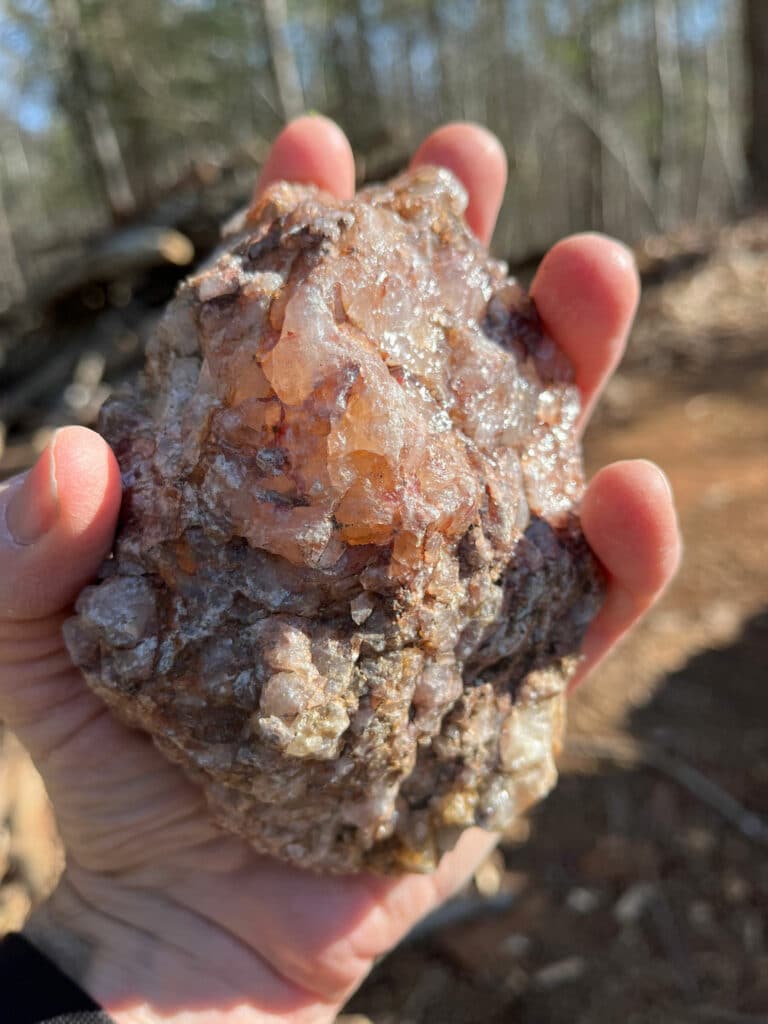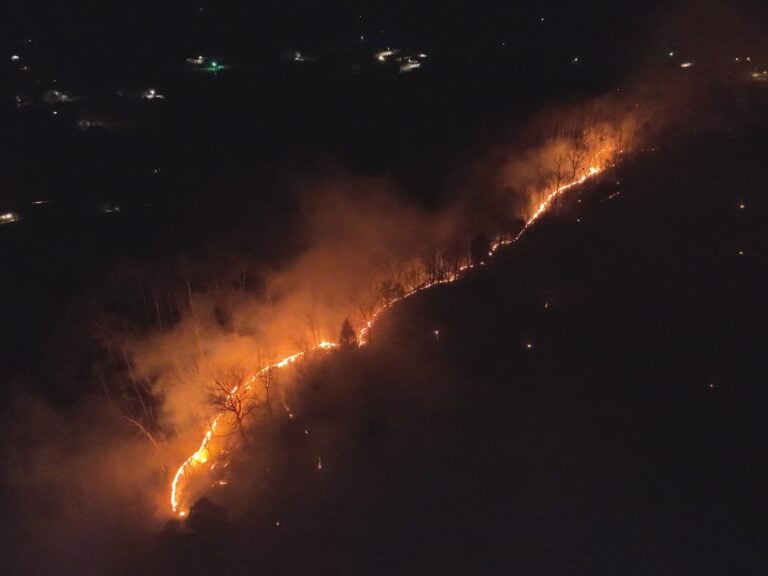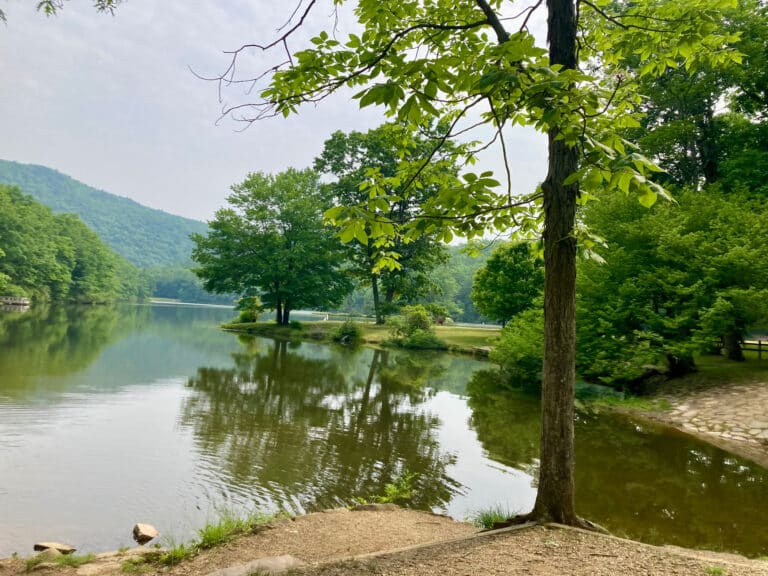Extensive efforts to add highway wildlife crossings near the Smokies aim to protect animals and people
Editor’s Note: This story was printed in our October issue before Hurricane Helene devastated portions of western North Carolina and surrounding areas. Due to flood damage on Interstates 40 and 26, the efforts of the Safe Passage coalition detailed in this report are likely to be impacted in ways that are not yet clear. Learn how to help those affected by Helene here.
By 10 p.m., interstate 40 was dark and deserted as NorthCarolina State Representative Sarah Crawford and her husband Dan cruised east past Morganton, N.C. They were eager to reach their hotel for some rest between the wedding they’d just attended and the comedy show and baseball game planned for the next day.
Then the car stopped “like we had hit a brick wall,” said Sarah Crawford, a Wake County representative in the North Carolina General Assembly.
In fact, they’d hit a 200-pound bear. Every air bag deployed, the front fender crumpled, and the car was left motionless in the dark—on a road where most people drive 70 miles per hour or more. Though the couple managed to escape mostly unscathed, the car was totaled, and the bear was dead.
It was a “pretty scary incident” that sent Crawford “down a rabbit hole” searching for information about how to make roads safer for both human travelers and native wildlife. That journey led her directly to the Safe Passage coalition, a group of people and organizations that has been working since 2017 to make wildlife crossings safer not only in its focus area of the Pigeon River Gorge, but also in hotspots across North Carolina and Tennessee.
“We at Safe Passage often use the tagline, ‘what’s good for wildlife is good for people,’” said Tim Gestwicki, the coalition’s steering committee chair and CEO of the North Carolina Wildlife Federation. “And clearly, if they run into a large animal, the danger is there for people too. So it’s a perfect nexus of people and wildlife safety.”

Over the years, Safe Passage has become an increasingly organized collaborative of dedicated partners involved in everything from transportation planning to educational outreach and lobbying efforts—work that is predicated on foundational research it conducted starting in 2018. Coalition partners Wildlands Network and National Parks Conservation Association hired researchers Liz Hillard and Steve Goodman to tackle the project, and the pair placed 120 cameras along the 28-mile Pigeon River Gorge corridor. This stretch of Interstate 40 straddles the North Carolina-Tennessee line, bisecting a rugged landscape that falls mostly within either the Pisgah National Forest, Cherokee National Forest, or Great Smoky Mountains National Park.
The researchers spent three years investigating how this road impacts wildlife. Their work involved tallying roadkill spotted along the highway, combing historical accident and police reports for wildlife collisions, fitting 13 elk with GPS collars, and analyzing data captured on the cameras. These methods allowed the team to evaluate 304 wildlife–vehicle collisions, finding that more than half involved bears and nearly two-thirds occurred between October and December, mostly close to existing structures like culverts or bridges.
“Where we built this infrastructure is where we also move through the landscape, the path of least resistance. So, the wildlife are getting funneled there too,” said Hillard. “But these structures aren’t adequate for them to use, and that’s why we’re seeing elevated rates of wildlife–vehicle collisions where these structures are.”
The cameras also revealed that large numbers of wildlife roam the forest along the highway but never attempt to cross it. Nearly every camera captured images of bear and deer, and most had bobcats.
“One take-home point was the pure abundance of wildlife,” Goodman said.
As the research progressed, the coalition also seized on a serendipitous opportunity to create immediate change. Through its collaboration with the North Carolina Department of Transportation, Safe Passage learned that the agency would soon replace five bridges in the gorge. Wildlife crossings were not on the DOT’s radar when it began the project, but after Safe Passage approached Division 14 Engineer Wanda Payne about adding them in, she considered it “the perfect opportunity.”
At Harmon Den Bridge at Exit 7, wildlife-friendly paths have replaced the riprap NCDOT was planning to install under the bridge along Cold Springs Creek. Cattle guards on the exit ramps discourage deer and elk from accessing the highway, and a nine-foot-tall fence excludes animals from the road and guides them under the bridge. Since the project was completed in 2023, Goodman and Hillard have detected raccoons, opossums, skunks, groundhogs—and more recently, black bears and coyotes—traveling safely through the underpass. But it remains to be seen what the long-term impact might be as vegetation reclaims the site and adult animals pass down their knowledge of safe crossing places.
“It could take five years before a self-respecting elk will go under something that’s had a human imprint for a long time,” said Goodman.

Meanwhile, the DOT is using many of the techniques employed at Harmon Den on the remaining four bridges. Two bridges near Exit 24 at Jonathan Creek are nearing completion, and work has begun on Pigeon River Bridge and Fines Creek Bridge, both near Exit 15. Each bridge incorporates slightly different wildlife mitigations based on how animals interact with the road at that particular location. “There’s no one size fits all,” said Payne.
Road ecology—the study of how human highways impact living things—is a fairly new field. The federal highway system predates it by “many decades,” said Ben Prater, Southeast program director for Defenders of Wildlife. But it’s a vital area of study. For every animal that attempts a potentially deadly highway crossing, Goodman and Hillard found, many more cease to try, creating a barrier effect that makes populations on either side less resistant to changes in climate, habitat, disease, and other pressures. Roads are also a barrier to the natural flow of water and aquatic creatures within it. Plus, they’re loud. “The soundscape in natural habitats is dramatically impacted by road noise,” said Prater. Myriad animal communications and activities suffer as a result.
To address these issues, Safe Passage hopes to see road ecology become a standard part of transportation planning and a recurring category in governmental budgets. The group marked its first major funding success in 2023 when the North Carolina General Assembly allocated $2 million for wildlife crossing improvements. The money was directed to Haywood County to address issues in the Pigeon River Gorge, where it will most likely be used to install wildlife fencing from the Tennessee line to Exit 20 and assess the feasibility of other mitigation recommendations from Goodman’s and Hillard’s research.
Now, Safe Passage is asking North Carolina legislators for $10 million, a sum that could unlock up to $90 million more in federal grant funds, protecting wildlife at critical crossings across the state. Proposed project areas include: I-26 in Madison County, N.C.; 143 in Graham County, N.C.; 24/27 in Montgomery County; and US 64 in Washington County.
“Every crossing,” Gestwicki said, “contributes to the larger conservation puzzle.”
Learn more at SmokiesSafePassage.org.
Cover photo by Michele Sons








